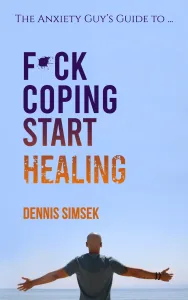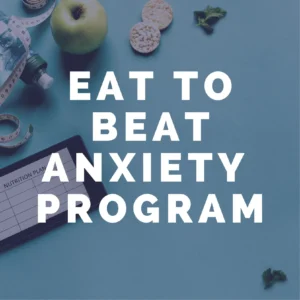Friends, welcome back. I’m Dennis Simsek, and today I want to shine light on something most people miss on their recovery path. It’s about that part of you I call the inner protector, and why it never seems to stop finding new things to worry about. I’ll explain why sensations wander from one place to another, how your attention feeds the whole cycle, and what I do when this happens to me or my clients.
What the inner protector is and why it acts
I like to think of this protector like a guard dog inside my nervous system. Its job is to keep me safe. When there is real danger, it does its job perfectly. You step off the curb and a car comes barreling through, your heart jumps and you pull back. That’s protection.
But with health anxiety that guard dog gets stuck on high alert. It barks at shadows, at wind, at leaves falling. The protector believes danger is everywhere, and it never lets me rest. The result is not one steady problem. Instead, I get a parade of new sensations.

A guard dog that keeps looking
If I feel a little ache in my chest, the protector immediately yells danger. I check. I Google. I ask someone for reassurance. I calm down, and then something else happens: maybe my stomach tightens. Now the protector finds a new target and says, wait, maybe this is worse. It never stops scanning, because it’s wired to look for threats when it does not trust that I am safe.
Why my symptoms never stay in one place
You might notice this yourself. One day it’s chest tightness, the next day dizziness, then tingling in the hands. Because the focus keeps changing, the protector uses that as proof that something serious is wrong. It says, you see, this has to be real. But the truth is different.
How attention pulls sensations around
Think of your awareness like a spotlight. Wherever that light lands, sensations seem to grow louder. When I shine it on my chest I notice every flutter. I move it to my stomach and suddenly I notice every gurgle. Under stress the body creates many normal responses: tight muscles, odd breathing, shifts in blood flow. These are ordinary. But when my protector believes danger is real, it treats those normal signals like alarms.
The spotlight effect on the body
I remember working with someone who was convinced she had a brain tumor. She had head pressure and headaches for weeks. Then one morning the headaches stopped and she woke with stomach pain. Instead of thinking maybe this is stress showing up differently, her protector announced a new catastrophe. That’s how it works. If it can’t get my attention with one sensation, it will find another.
The awareness loop that keeps symptoms growing
There’s a cycle I call the awareness trap. I notice a sensation. The inner protector labels it as dangerous. I get anxious. My body reacts and creates more sensations. I notice those sensations. The cycle repeats. It’s exhausting.
From notice to fear to more sensations
Imagine holding a flashlight in a dark room. I sweep it over the door. Nothing there. Then to the corner. Nothing there. Under the table, and suddenly I see dust floating. My brain screams danger. The more I search my body, the more I find things to worry about. The cruel part: focus fuels the feeling. Attention amplifies it.
How I work with my protector
Fighting the protector only makes it louder. I don’t try to silence it. I work with it. Over time I teach it to relax. Here are the steps I use and teach.
1. Acknowledge the protector
When a sensation shows up I say to myself, I see you. You are trying to protect me. Thank you, but I am safe right now. This changes the relationship: the sensation becomes an overprotective friend, not an enemy.
2. Redirect my focus gently
Instead of scanning my body I place my attention back on life: the conversation I’m having, the food I’m eating, the walk I’m taking. I don’t force it. I nudge my spotlight back where life is happening.
3. Limit reassurance loops
I watch for the habits that feed the protector: Googling, asking loved ones for certainty, checking my pulse. Each reassurance reinforces the belief that danger is real, so I reduce those checks.
4. Practice sitting with sensations
I practice allowing a racing heart or light headedness to be there without rushing to change it. Each time I do that, I teach my protector these sensations are not signs of immediate disaster.
Using daily practice
If you want a practical way to build this skill, try short, daily sessions where you notice sensations and let them be. I recommend my surrender sessions on YouTube for a guided approach. Doing something like that every single day trains the protector to understand safety slowly and steadily.
Why recovery does not mean no sensations ever again
Recovery does not mean eliminating every feeling. It means building trust. My goal is not a perfectly quiet body; it is a protector that rests more often because it learns life is safe enough to enjoy. Bit by bit it stops barking at every leaf.
Imagine a different morning
Imagine waking up and not scanning your body. Imagine a whole day without Googling your sensations. That freedom is possible, not because every feeling is gone, but because you have built trust in your body and in life.
Final thoughts and an invitation
Today we covered the job of the inner protector, why sensations travel, how attention fuels the loop, and practical ways I work with the protector: acknowledge, redirect, limit checking, and gentle exposure.
If this spoke to you, I want to remind you about the Health Anxiety Recovery Program at anxietyguyprograms.com. It’s a step by step program I put together for people who want a clear path out of fear and endless checking. Thousands have found relief. You can too.
Thank you for spending time with me today. If this helped, share it with someone who needs it. Remember, you are more than anxiety. I love you all from the bottom of my heart. I’ll see you soon. Bye for now.
Citations
Health Anxiety | Anxiety and Depression Association of America, ADAA. (2025). Adaa.org.
NHS website. (2021, February). Health anxiety. Nhs.uk.
Helping Health Anxiety Module 3 What Keeps Health Anxiety Going? (n.d.). Retrieved September 12, 2025,




